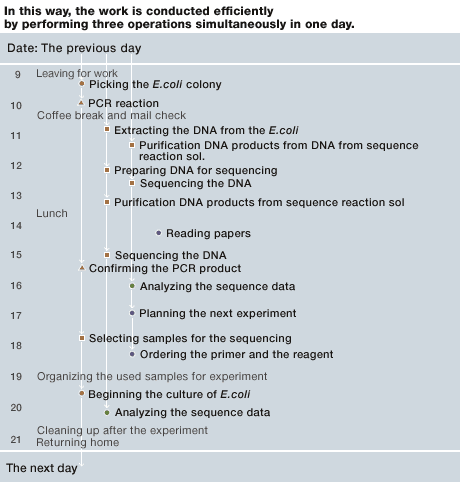 |
| We are studying the oviposition stimulation mechanism of the butterfly existing on their foreleg tarsi to clarify the speciation (evolution) mechanism resulting from the host plant selection. |
|
It is difficult to discover chemosensory receptor genes (GPCRs) because very low expression level and a few homology to similar genes are known. Searching for the GPCR genes expressed at the tarsi of the forelegs of female butterflies by cloning the genes and reading the DNA sequence is "wet" work that involves dealing with the living creature. Analyzing the DNA sequence of the genes and estimating the structure and function of translated proteins by many computer algorithms is "dry" work. These two works are often team effort by each technical expert, but I do both alone.
A vast numbers of DNA sequences must be read and analyzed to discover the GPCR genes that relate to oviposition stimulation. Additionally, the sequences of multiple species are required to a comparison within the same Papilionidae family. I developed "human power high throughput DNA sequencing method" to accelerate my work. Although this method does not use automated machines of colony picking or nucleic acid extraction it is able to obtain high quality DNA sequence data speedy.
(Katsuhisa Ozaki) |


